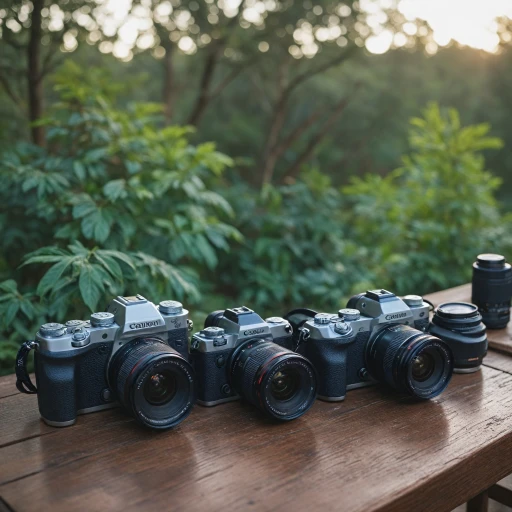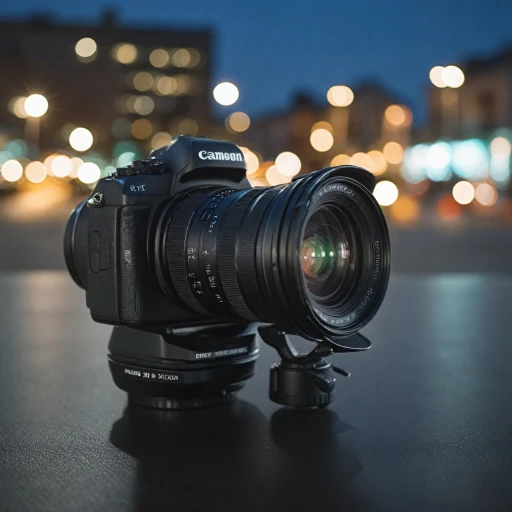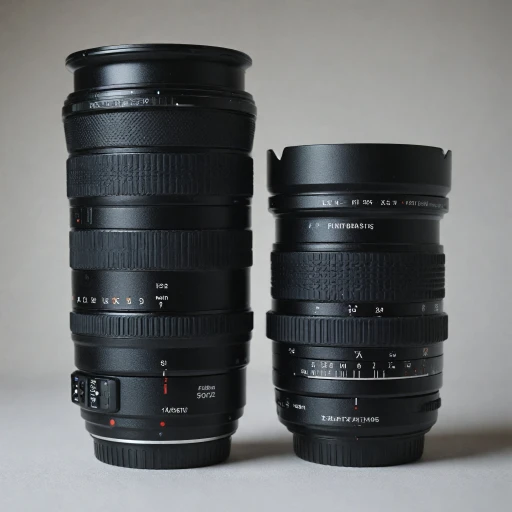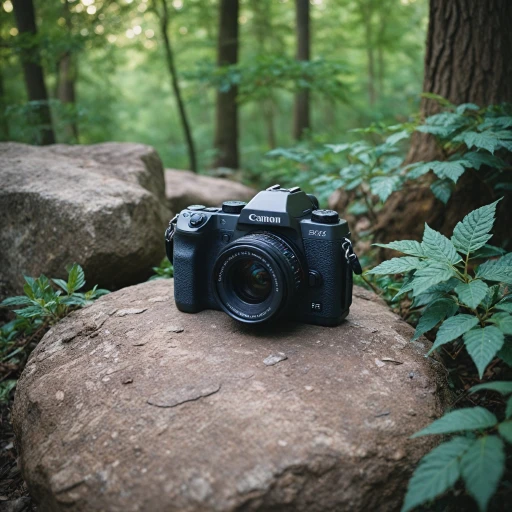
Understanding the Sigma 150-600mm Lens
The Sigma 150-600mm: A Brief Overview
The Sigma 150-600mm lens stands out in the realm of high-performance optics, offering versatility that appeals to photographers across various genres. This lens is part of two key Sigma lines: the Contemporary and Sport versions, each catering to different needs—whether looking for lightweight convenience or robust build quality for rugged conditions.Specs and Features
Both versions of the Sigma 150-600mm share exceptional optical performance, including low dispersion glass to minimize chromatic aberration and enhance image quality. The focal length ranges from 150mm to 600mm, providing adaptability for various scenarios—from capturing sports action to photographing wildlife. Integrating the Sigma HSM (Hyper Sonic Motor), this lens promises swift and silent focus, crucial for maintaining discretion and accuracy.Design and Build
The lens’s build quality reflects Sigma's dedication to producing superior products at an achievable price point. The weather-sealed structure of the Sigma Sport version ensures durability, while the ergonomic design features such as the zoom ring, zoom lock, and tripod socket add to user comfort. The lens hood further aids in minimizing lens flare and protecting the camera.Customizing for Personal Use
With the inclusion of a USB dock, users can personalize settings such as focus speed and optical stabilization to suit their shooting style. Whether you're using a Canon, Sony, or another mount, the versatility offered by this lens is unmatched, making it a strong competitor against brands like Tamron. For more insights into unique lens types that may complement your photography, explore the world of fisheye lenses.Benefits of Using the Sigma 150-600mm Lens
Unveiling the Advantages of the Sigma 150-600mm
When it comes to long-range photography, the Sigma 150-600mm lens stands out as an exceptional tool for both amateur and professional photographers. Its appeal lies in multiple benefits that significantly enhance the quality and flexibility of your work.
One of the primary advantages of this lens is its impressive zoom range. Stretching from 150mm to 600mm, this lens allows photographers to capture a wide array of scenes, from sweeping landscapes to intricate wildlife portraits. This versatility makes it a favored choice for sports photography as well, where the ability to zoom quickly and efficiently is crucial.
The lens's build quality is also noteworthy. Crafted with durability in mind, it comes with a sturdy tripod socket, ensuring stability during long stationary shoots. The zoom lock mechanism is another practical feature, preventing the lens from sliding, especially when shooting in a downward direction.
The Sigma 150-600mm comes in two variations: the Sigma Sport and the Sigma Contemporary. While both offer excellent image quality, the Sport version is particularly engineered for those who demand superior performance under challenging conditions. It includes additional features like better weather sealing, which is ideal for shooting in unpredictable environments.
Additionally, the lens employs advanced optics to deliver high-quality images. It incorporates low dispersion glass and cutting-edge chromatic aberration correction, reducing color fringing and enhancing image clarity. The lens hood helps minimize lens flare and color ghosting, boosting the overall optical performance.
Furthermore, the Sigma 150-600mm is compatible with several camera mounts, including Canon and Sony, amplifying its usability across different camera systems. The incorporation of the Sigma HSM (Hyper Sonic Motor) ensures fast and quiet autofocus, a critical factor when capturing wildlife or sports subjects.
When investing in a lens of this caliber, price and build quality become important considerations. The Sigma version remains competitive, especially when compared to similar offerings from brands like Tamron.
Finally, photographers will appreciate the option to fine-tune the lens through Sigma's USB dock, allowing users to customize focus settings and enhance the lens's functionality further.
Comparing the Sigma 150-600mm to Other Lenses
The Sigma 150-600mm Lens Against Its Rivals
When it comes to telephoto lenses, the Sigma 150-600mm lens is a force to be reckoned with. However, it's important to know how it stacks up against other similar lenses in the market. Users often compare it to lenses from Tamron and Canon, as both brands offer similar zoom ranges and focal length capabilities.
One deciding factor is image quality. The Sigma lens is known for its excellent optical performance, featuring low dispersion glass that effectively minimizes chromatic aberration. This ensures sharp and vibrant images, which is a major plus for photographers focusing on wildlife or sports photography. It's also noteworthy that both the Sigma sport and sigma contemporary versions deliver consistent image quality, thanks in part to their advanced optical technology.
The build quality of the Sigma should also be considered. The contemporary version is lightweight, making it a good choice for handheld shooting, while the sport version is more robust and durable, catering to those looking for a lens to withstand adverse conditions. Additionally, features like the zoom lock and tripod socket bring convenience and stability, especially when capturing fast-moving subjects. This can be crucial during extended shoots where maintaining compact and organized gear is imperative.
Price is another pivotal point. The Sigma lens is competitively priced, often offering a good balance between cost and performance when compared to other brands like Canon and Sony. It also supports multiple camera mounts, which provides versatility to photographers using different platforms.
Lastly, the ability to customize settings using a USB dock is a unique advantage of the Sigma lens, allowing users to fine-tune focus and image stabilization according to their specific needs. This added layer of control is less common in competitors and is a feature that tech-savvy photographers appreciate.
While each lens has its strengths, choosing the right one depends on your specific photography needs and preferences. Whether you need a lens for sports or a versatile option for travel, the Sigma 150-600mm lens remains a strong contender in the realm of telephoto lenses today.
Tips for Maximizing the Sigma 150-600mm Lens
Optimize Your Setup for Best Results
For those looking to harness the full potential of the Sigma 150-600mm lens, understanding how to maximize its features is crucial. First, stability is key. Using a tripod can greatly enhance image quality by minimizing camera shake, especially when operating at extended focal lengths within its impressive zoom range.
Enhance Focus Precision
The Sigma 150-600mm lenses, like the Sigma Contemporary and Sigma Sport versions, come equipped with a zoom lock that keeps your lens secured at a specific focal length, reducing any unintended movement. Utilizing this feature alongside the Hyper Sonic Motor (HSM) technology can improve focus accuracy and speed, making the lens ideal for sports photography.
Understand Available Accessories
To further improve your imaging experience, consider using a lens hood to control unwanted chromatic aberration and flare, enhancing the overall image quality. Additionally, the tripod socket on the lens provides another layer of support, particularly beneficial during long sessions or when capturing fast-paced subjects.
Monitor and Adjust with USB Dock
Using Sigma's USB dock, you can update firmware and adjust focusing parameters, ensuring your lens operates at its best. This fine-tuning can mitigate common issues such as optical performance inconsistencies or distortion, allowing for higher build quality and precision.
Master Different Environments and Conditions
Whether you're shooting for Canon, Sony, or Tamron mounts, understanding different lighting and environmental conditions is essential. The lens’s advanced low dispersion glass provides excellent clarity in varied settings, making it a good choice for both novices and seasoned photographers seeking high-quality results in the field.
Real-World Applications of the Sigma 150-600mm Lens
From Wildlife to Sports, Capture Every Moment
The Sigma 150-600mm lens proves its worth in a variety of real-world applications, catering to enthusiasts and professionals alike. Whether you are venturing into wildlife photography, capturing the intensity of sports events, or exploring the subtleties of nature, this lens offers an unparalleled experience.Wildlife Adventures
For wildlife photographers, capturing distant animals in their natural habitat can be challenging. The impressive focal length and optical performance of the Sigma 150-600mm provide an edge in getting those elusive, crystal-clear shots from a distance. The lens allows for quick adjustments and focuses seamlessly on moving subjects, a crucial feature when every second counts.Sports Photography
The demands of sports photography are unique, with fast-paced action requiring reliable autofocus and high-quality image capture. The lens’s HSM (Hyper Sonic Motor) ensures quick and quiet autofocusing, while the low dispersion glass minimizes chromatic aberration, delivering high-quality images in dynamic environments. Its rugged build quality and the availability of both Sport and Contemporary versions cater to various needs and preferences.Versatile Nature Shooting
In addition to wildlife and sports, the Sigma lens excels in nature photography. Its range allows for close-ups of flora from a distance, making it easier and safer to photograph without disturbing the subject. The zoom range is bolstered by the lens hood and tripod socket, which help reduce distortion and ensure stability. Ultimately, the Sigma 150-600mm lens stands as a versatile tool, supporting photographers in capturing moments across varied scenarios, fortifying its place in their gear collection. With the right techniques and complementary equipment such as a sturdy tripod, users can explore a vast spectrum of photographic opportunities.Common Challenges and Solutions with the Sigma 150-600mm Lens
Tackling Common Issues with the Sigma 150-600mm
Navigating the challenges with the Sigma 150-600mm lens is crucial for enthusiasts aiming to harness its full potential. Despite its superior build quality and impressive image quality, users may encounter a few hurdles. Here's a breakdown of typical challenges and practical solutions:- Focusing Challenges: The Sigma 150-600mm's focus can sometimes be tricky, especially in low light or with moving subjects. If the lens struggles with autofocus, consider using the Sigma HSM for faster and quieter focusing. For precise adjustment, the USB dock is an excellent tool to update firmware or fine-tune focus settings. Utilizing the manual focus override can also enhance precision in challenging lighting conditions.
- Tackling Chromatic Aberration: While the low dispersion glass incorporated in the lens minimizes chromatic aberration, some fringing may still occur. To mitigate this, try shooting in RAW to correct color fringing in post-processing. Additionally, using the lens's built-in optical performance features can also assist in reducing aberration automatically.
- Handling the Weight: The sports lens can feel hefty during prolonged use. Using a tripod with a sturdy tripod socket can alleviate the weight burden and enhance stability, ensuring sharp images across the zoom range. For those seeking more agility, consider the Sigma Contemporary version, which offers a lighter alternative with a slight compromise on extreme weather sealing seen in the Sigma Sports version.
- Dust and Weather Resistance: While the robust build quality is a hallmark of this lens, real-world shooting environments can be tough. Ensuring that the lens hood is in place is key, providing added protection against weather elements and potential lens flare.
- Price Sensitivity and Compatibility Issues: At a higher price point, it’s essential to ensure the lens mount compatibility fits with your camera body, whether Canon, Sony, or another preferred brand. Check specific models to confirm compatibility before purchasing.
- Overcoming Zoom Range Limitations: The extensive focal length of 150-600mm can be limiting in cramped environments. Knowing when to pull back to a wider frame can be a learned skill, especially when transitioning from a wide-angle to a more focused perspective.












